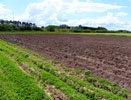Services
Solutions
Fulltext
Belize (2006-2011)
Works in Belize were conducted in accordance with the development aid project "Mining and processing of industrial minerals in Jamaica and in selected CARICOM States" (2006-2011) that followed-up on the first working contacts between our team and Belizean geologists in 2003 and 2005. The Belizean side was represented by the Ministry of Natural Resources and the Environment, Geology and Petroleum Department (GPD). The scope of the work was subject to the development objectives and priorities of the partner organisation. The Belizean geologists participated in the professional and logistical implementation of geological exploration works and in the selection of the sites to be surveyed. The programme included training the staff of the partner organisation, including visits to and training in the CR. The training was focused on the methodology for the evaluation of deposits of industrial minerals, the issues of the rational and economical use of raw materials, of mining design, remediation and reclamation and of the processing of raw materials.
 A large area of Belize is covered by tropical forests and rainforest. Limestone, dolomite and gravel are mined to a limited extent; in recent years petroleum has become the great hope. The main objective of our work was the geological and technological evaluation of potential sources of selected non-metallic mineral resources and the assessment of their reserves. The fieldwork took place in several stages during the years 2007-2010. Rock samples were collected from artificial or natural outcrops, exploration cuts and manual boreholes. At the locations of ceramic clays and bentonite dozens of exploratory boreholes with a depth range of 6-7 m were excavated using the Eijkelkamp hand-held rig. Laboratory, technological, mineralogical-petrological and deposit and geological assessment was carried out in the Czech Republic.
A large area of Belize is covered by tropical forests and rainforest. Limestone, dolomite and gravel are mined to a limited extent; in recent years petroleum has become the great hope. The main objective of our work was the geological and technological evaluation of potential sources of selected non-metallic mineral resources and the assessment of their reserves. The fieldwork took place in several stages during the years 2007-2010. Rock samples were collected from artificial or natural outcrops, exploration cuts and manual boreholes. At the locations of ceramic clays and bentonite dozens of exploratory boreholes with a depth range of 6-7 m were excavated using the Eijkelkamp hand-held rig. Laboratory, technological, mineralogical-petrological and deposit and geological assessment was carried out in the Czech Republic.
Specifically evaluated with positive results were the ceramic clays surveyed in the Swasey Bladen area in the southern part of Belize, and also the bentonite (or montmorillonitic clays) surveyed at the Spanish Lookout site in the western part of Belize and Manatee and the Soldier Creek dolomite deposits located in the eastern part of the country (the Stann Creek District). Calculated were the reserves of white-burning ceramic clays, suitable materials for tiles, and of colour-ware clays, suitable for the manufacture of stoneware and coarse pottery. The applicability of raw materials for foundry and recently also for other uses, such as for the production of mineral litter, was verified at the bentonite deposits. It is clear that the thickness of the positive development of ceramic clays and bentonite exceeds the depth reach of shallow boreholes. Only the next phase of exploration using a core-drilling machine can provide clarification but this will be a task for the potential investor. Prospecting works for feldspar were carried out in the central and western parts of Belize, focused specifically on a mantlerock of the granite massif in the mountainous area of the Mountain Pine Ridge. The assessment of individual sites included an evaluation both of their accessibility and regarding any conflicts of interest with nature conservation.
Significantly contributing to this project were many of the leading laboratories and institutions of the Czech Republic, in particular the Institute of Geology of the AS CR, The Institute of Chemical Technology, Prague; The Research Institute of Building Materials in Brno; the Stone and Aggregate Testing Laboratory, Hořice; KERAMEX Group s.r.o, Karlovy Vary; GEOMEDIA, s.r.o., Prague; GEMATEST spol. s. r.o., Černošic; GIS-GEOINDUSTRY s.r.o., Prague and the Central Laboratory of the Sedlecký Kaolin a.s., Božičany.































